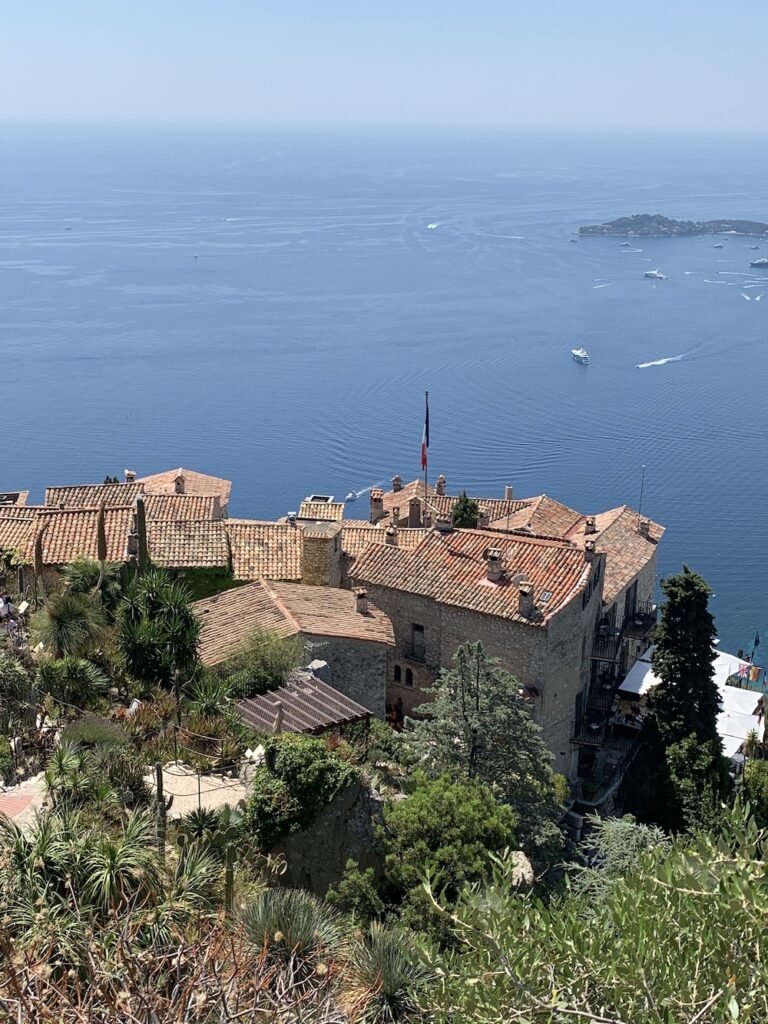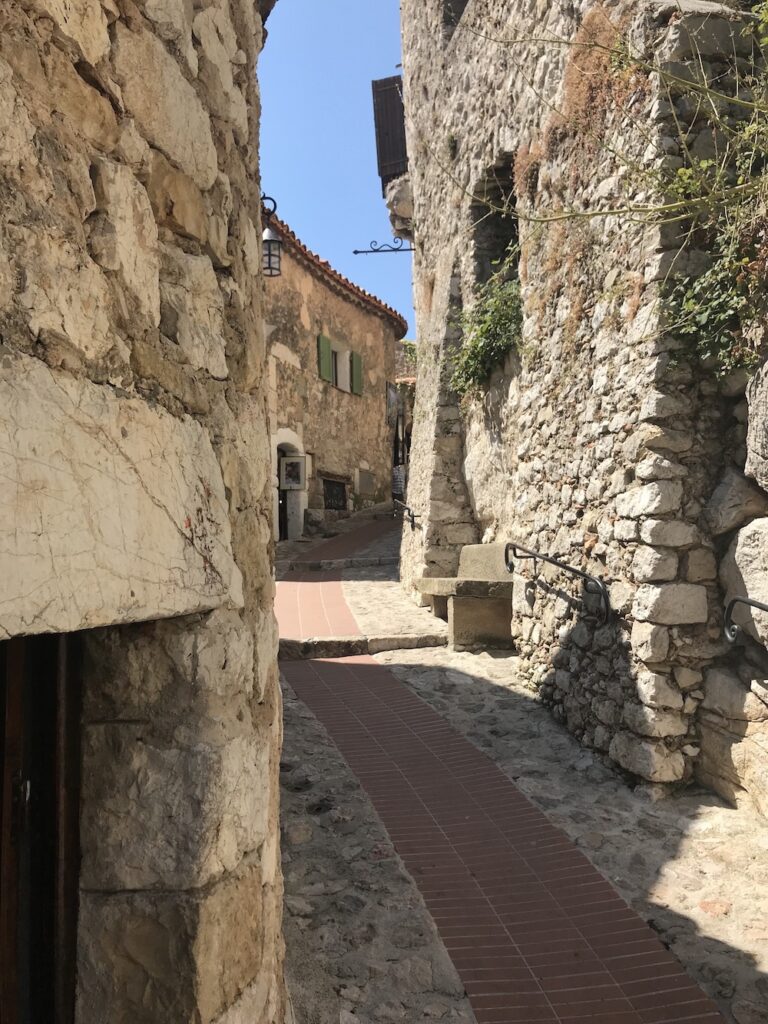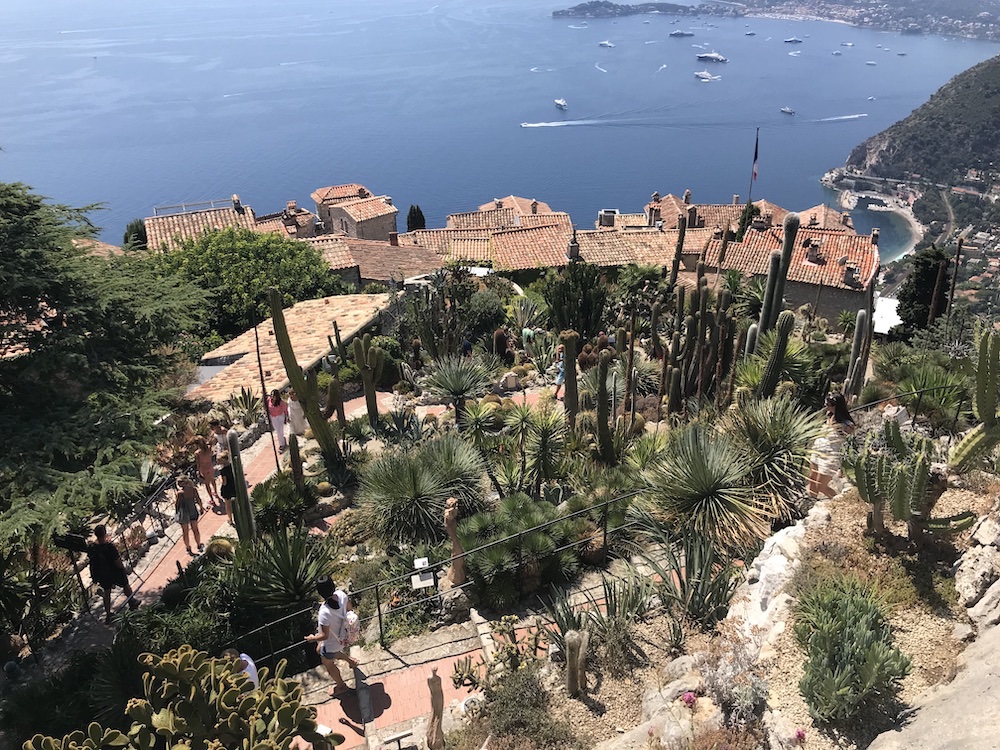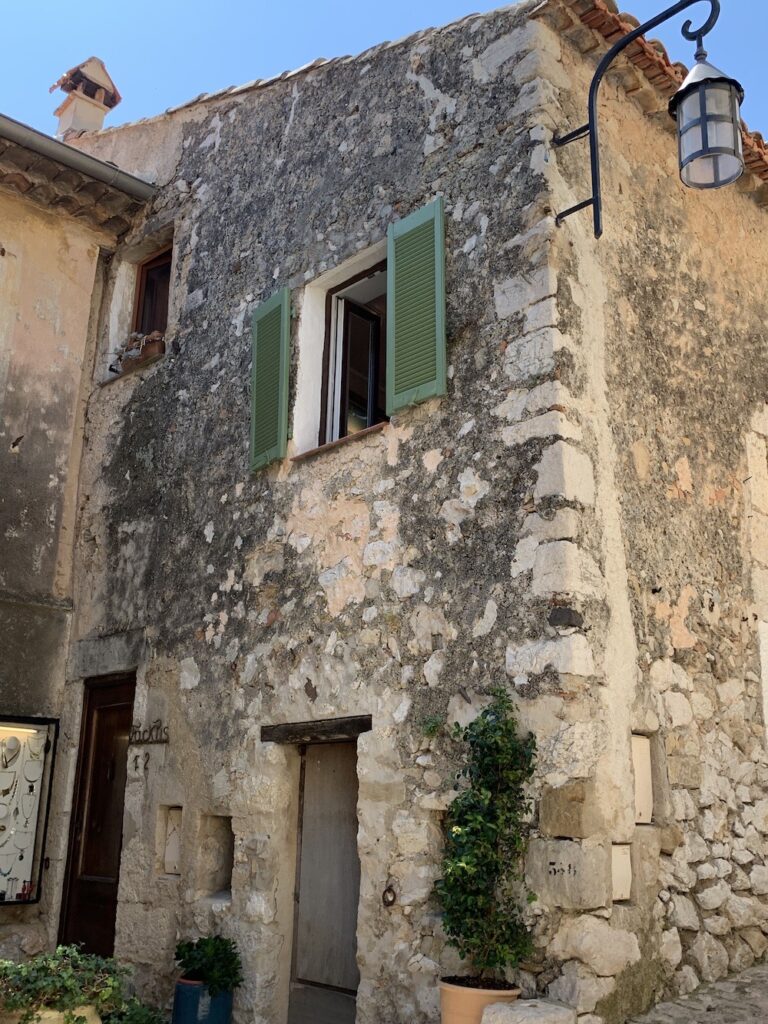

The old adage if you’ve seen one you have seen them all does not apply to as a small village located halfway between Nice and Monaco on France’s Côte de Azur. Famous for medieval villages, it is an easy day trip from either those well-known principalities. Traveling by either train or car along the Moyenne Cornish, the scenic cliff-hugging road stretching between Nice and Monte Carlo, will take you to Èze.
The road traverses small villages and parallels the shoreline of the stunning Mediterranean Sea. If you prefer to catch a train in Nice or from Monaco, it’s a straight shot along the coast, and the Èze sur Mer station is the destinations stop. From the station you can head towards the shore for Èze sur Mer or be adventurous and hike up the Nietzshe Path, a strenuous 450-meter incline to Èze village that will take you about one hour.
We chose to stop at Èze on our day long adventure from the Villefranche-sur-Mer cruise port and Nice. Our destination also included Monaco and Monte Carlo. If not for seeing pictures of the under the radar hidden gem on social media, we might have passed through as without stopping. Why? Èze Village is small, with fewer than four miles comprising the village. Regardless of its size, it’s worth a stop if you’re in the area.

Cobblestone walkways create a maze in Eze. pc Jan M. Smith
The History of Èze
From a bird’s eye view, Èze Village looks like a semicircular development from the bottom of the hill to the top. The buildings surrounding the ruins of a 12th century castle, which once had a history of occupation by the Romans, Italians, Turks, Moors, Phoenicians, and more recently Monaco. Original houses (that are still standing today) were built initially with “La Turbie,” a type of limestone mined from nearby. Mules and men carried the store stones to the cliff-clinging village where they built houses on the remains of the ancient, fortified walls. Èze is a maze of cobblestone streets (initially for mule carts), connecting walls, and steps. About the steps— the village requires constant climbing with ascending streets and stairs. The climb begins as you enter the impressive and commanding fortress iron gates. It’s wise to be prepared with sturdy shoes and plenty of water if you plan a visit.

There is magic around every corner in Eze. pc Jan M. Smith
The village is a combination of cobblestones, bricks, and wrought iron which adds stunning contrast to the natural limestone exteriors. The lush flowering vines growing along the walls create Instagramable moments around every corner.
It is easy to wander and get lost in Èze, but that’s part of its charm. Besides admiring the architecture, you’ll easily be enamored with the various boutiques, artisan shops, restaurants, and galleries that were once houses.

It’s worth the long hike to the top of Eze to see the gorgeous gardens. pc Jan M. Smith
The Exotic Garden Le Jardin Exotique d’ Èze
Narrow paths and stairs weave throughout the village and eventually lead to the entrance of the Le Jardin Exotique d’ Èze (The exotic garden). A ticketed entry offers the only way to the scenic outlook at the very top of the garden. If you want to see the sweeping views of the Mediterranean Sea and the village of Èze sur Mer below, you’ll donate six euros to enter.
A diverse collection of flowering cacti, succulents, agave, aloes, and unique botanicals fill the garden. Unique species from various corners of the world bloom in the garden. More modern additions to the garden are the 15 “earth goddess” stone statues created by sculpture Jean Philip Richard. A north-facing slope of the garden offers lush flora and a place to relax and enjoy the cold spray of waterfalls, a contrast from the garden’s arid south side.
L’Eglise Norte Dame De L’Assomption Èze Village
Dating back to the 12th century, the L’Eglise Notre Dame De L’Assomption is the oldest building in Èze. The current church dates to the 17th century when citizens rebuilt it to replace the original church.

A few hotels are available within the Eze Village. pc Jan M. Smith
The Hotels of Èze Village
A few hotels reside in the village—the beautiful Château Èze, a five-star 38 room hotel with its Michelin rated restaurant, and Château de la Chèvre d’Or, a 14-room hotel with its Michelin rated restaurant. At some point in history, both were private residences for nobles. The hotels have direct access to the streets in Èze village.
As you descend from the top of his village, save time for a visit to the Fragonard Perfumery at the base of the village. Free tours are available. After a day of climbing Èze Village, the perfumery air conditioning and perfume sampling make perfect sense before you get back on the Moyenne Cornish towards Nice or Monaco.

